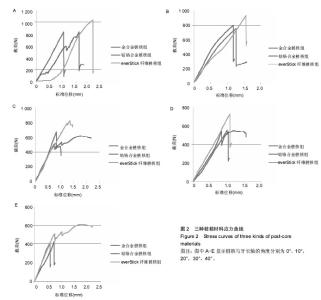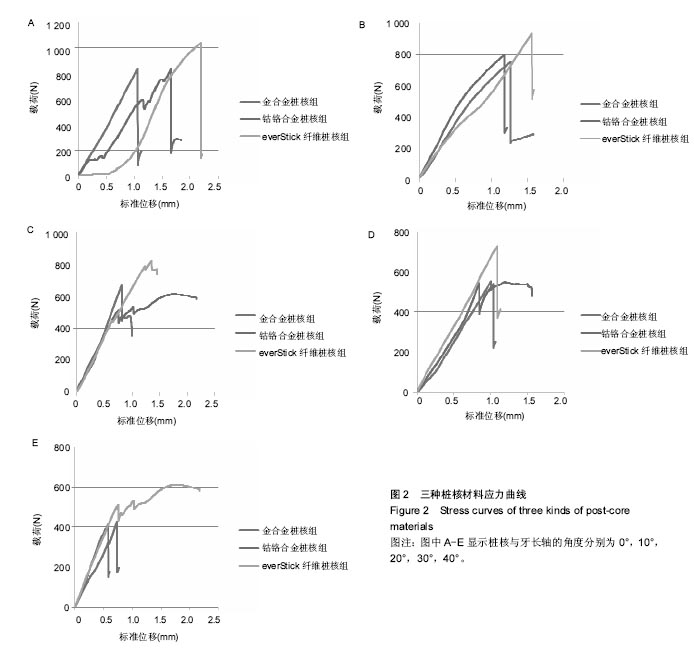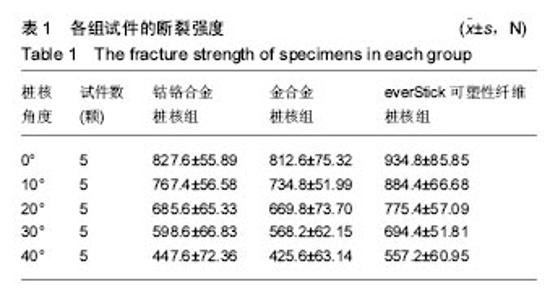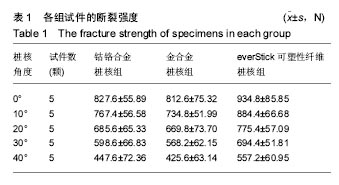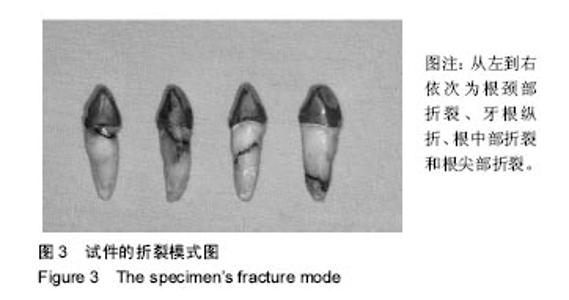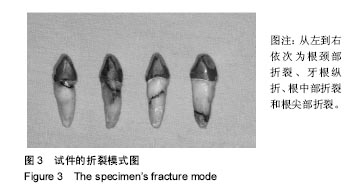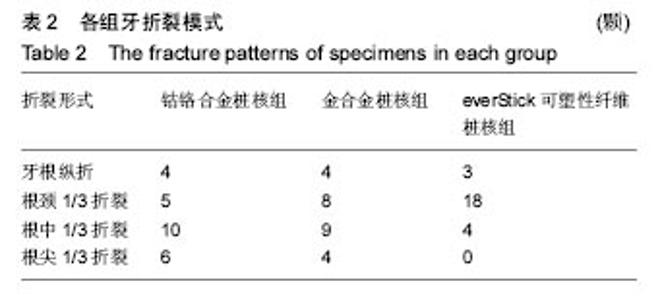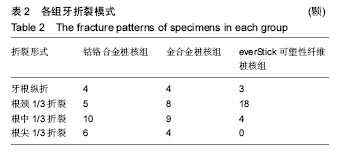| [1]李焕云,熊曦州,李晓红.改向铸造桩核烤瓷冠修复个别前牙错合的美学探讨[J].中国美容医学,2005,14(3):338-339.[2]齐景,郭长军,陈树国,等.不同角度桩核冠桩/牙本质界面应力分布的三维有限元分析[J].中国美容医学,2015,24(22):72-74.[3]彭利辉,钟爱喜,刘光雪,等.高强度纤维桩在前牙改向修复中的美学评价[J].中国临床新医学,2009,2(11):1129-1131.[4]Heydecke G, Butz F, Hussein A, et al. Fracture strength after dynamic loading of endodontically treated teeth restored with different post-and-core systems. J Prosthet Dent. 2002;87(4): 438-445.[5]Lima AF, Spazzin AO, Galafassi D, et al. Influence of ferrule preparation with or without glass fiber post on fracture resistance of endodontically treated teeth. J Appl Oral Sci. 2010;18(4):360-363.[6]张保卫,潘炜娟,叶少波.不同角度桩核的应力分析[J].上海口腔医学杂志,2000,9(1):8-10.[7]段明丽,陈树国,沈文静,等.不同桩核系统修复对根管治疗牙的影响[J]. 现代口腔医学杂志,2007,21(3):304-306.[8]Martínez-Insua A, da Silva L, Rilo B, et al. Comparison of the fracture resistances of pulpless teeth restored with a cast post and core or carbon-fiber post with a composite core.J Prosthet Dent. 1998;80(5):527-532.[9]张旭映,孙竞,卢军.不同材料不同形态桩核修复上颌中切牙牙本质应力的有限元分析[J]. 华西口腔医学,2012,30(2):128-132.[10]Eskita?cio?lu G, Belli S, Kalkan M. Evaluation of two post core systems using two different methods (fracture strength test and a finite elemental stress analysis). J Endod. 2002;28(9):629-633.[11]杨安,胥春.纤维桩核系统材料研究进展[J].口腔颌面修复学杂志,2013,14(2):107-110.[12]孙佳凝.牙科合金材料的生物相容性及影响合金离子析出的因素[J].国外医学:口腔医学分册,2003,30(3):212-214.[13]Maceri F, Martignoni M, Vairo G. Mechanical behaviour of endodontic restorations with multiple prefabricated posts: a finite-element approach. J Biomech. 2007;40(11):2386-2398.[14]Holmes DC, Diaz-Arnold AM, Leary JM. Influence of post dimension on stress distribution in dentin. J Prosthet Dent. 1996;75(2):140-147.[15]Garoushi SK, Lassila LVJ, Vallittu PK. Fibre- reinforced composite in clinical dentistry. The Chinese Journal of Dental Research.2009;12(1):7-14.[16]李莉莉.不同桩核系统结合不同粘固剂修复薄弱残根应力分布的研究[D].西安:第四军医大学,2006.[17]Assif D, Bitenski A, Pilo R, et al. Effect of post design on resistance to fracture of endodontically treated teeth with complete crowns. J Prosthet Dent. 1993;69(1):36-40.[18]Raygot CG, Chai J, Jameson DL. Fracture resistance and primary failure mode of endodontically treated teeth restored with a carbon fiber-reinforced resin post system in vitro. Int J Prosthodont. 2001;14(2):141-145.[19]Beg RT, Parker MW, Judkins JT, et al. Effect of dentinal bonded resin post-core preparations on resistance to vertical root fracture. Journal of Prosthetic Dentistry. 1992; 67(6):768.[20]陈湘涛,李晓娜,关振群,等.桩核材料对牙本质应力分布的影响[J].中华口腔医学杂志,2004,39(4):302-305.[21]Hamza TA, Rosenstiel SF, Elhosary MM, et al. The effect of fiber reinforcement on the fracture toughness and flexural strength of provisional restorative resins. J Prosthet Dent. 2004;91(3):258-264.[22]Perea L, Matinlinna JP, Tolvanen M, et al. Fiber-reinforced composite fixed dental prostheses with various pontics. J Adhes Dent. 2014;16(2):161-168.[23]Martínez-Insua A, da Silva L, Rilo B, et al. Comparison of the fracture resistances of pulpless teeth restored with a cast post and core or carbon-fiber post with a composite core. J Prosthet Dent. 1998;80(5):527-532.[24]李萍,朱智敏.循环加载对不同桩核修复后牙体抗折强度的影响[J].华西口腔医学杂志,2015,33(2):206-208.[25]葛绵,吴国锋,梁猛猛, 等.角度纤维桩核对牙根抗折能力影响的实验研究[J]. 牙体牙髓牙周病学杂志, 2012,22(4):215-218.[26]肖洁,何惠明,孔亮,等.下颌前磨牙不同角度桩核冠的三维有限元应力分析[J].口腔医学,2006,26(3): 223-225.[27]Chun YH, Raffelt C, Pfeiffer H, et al. Restoring strength of incisors with veneers and full ceramic crowns. J Adhes Dent. 2010;12(1):45-54. |
